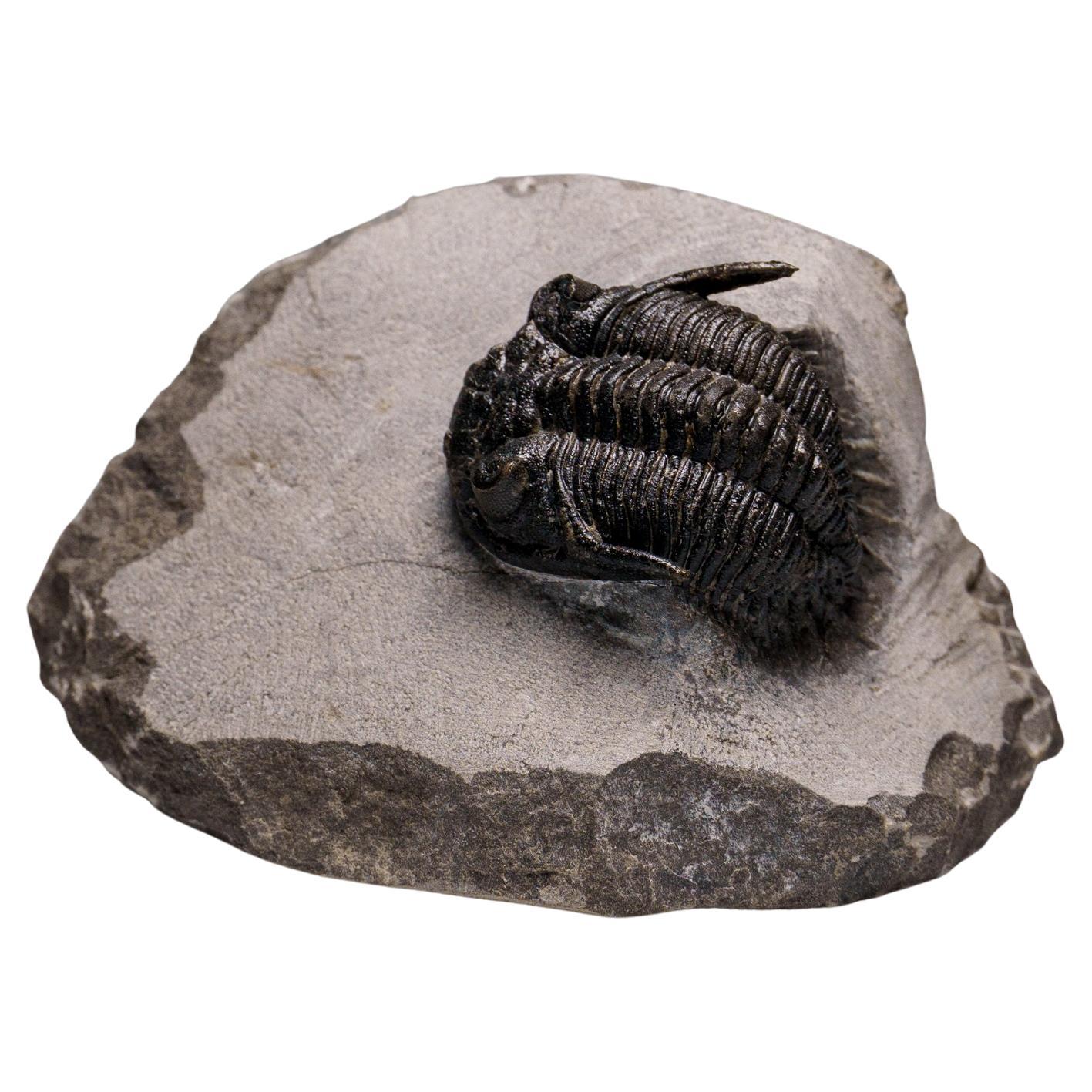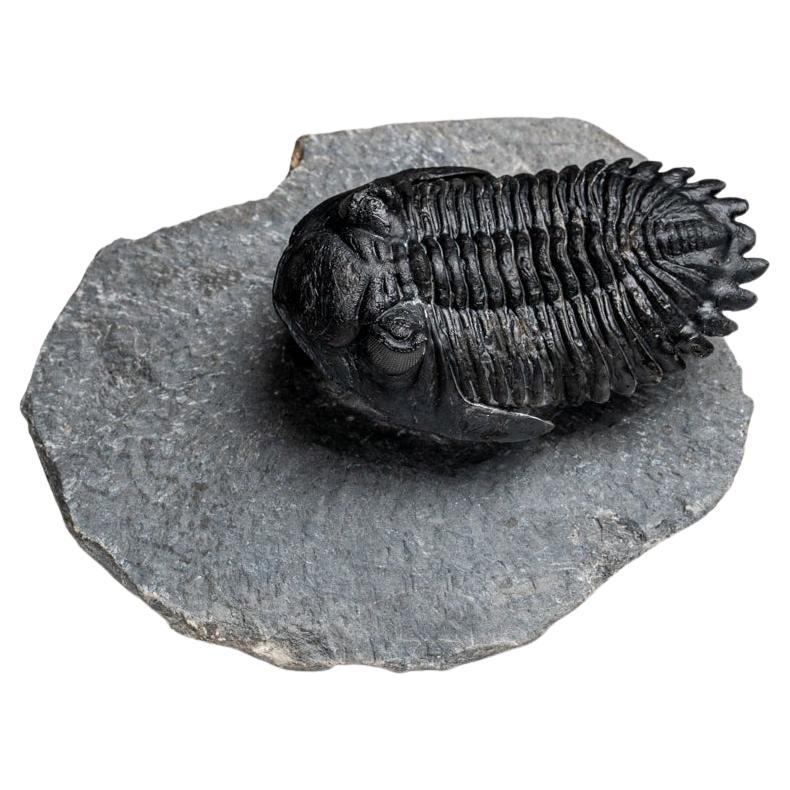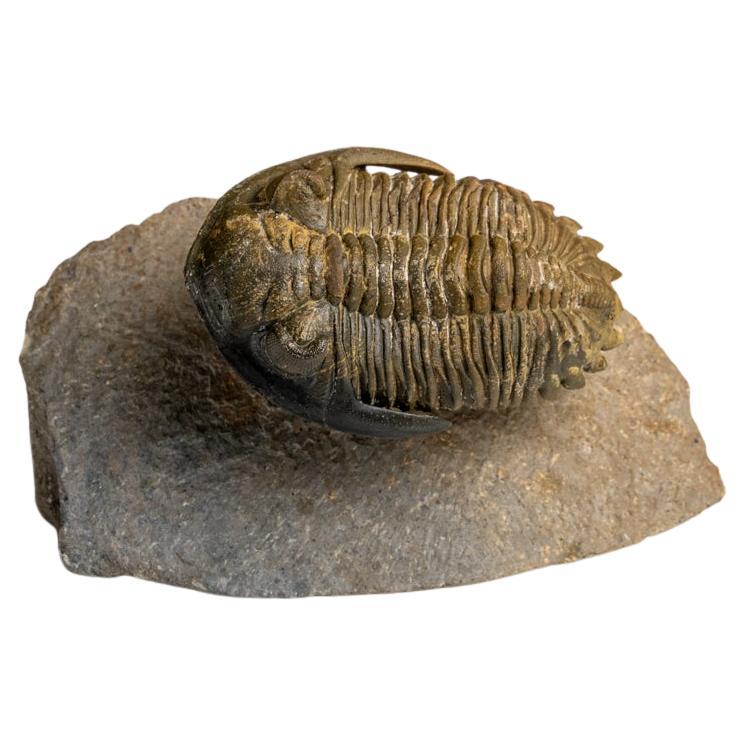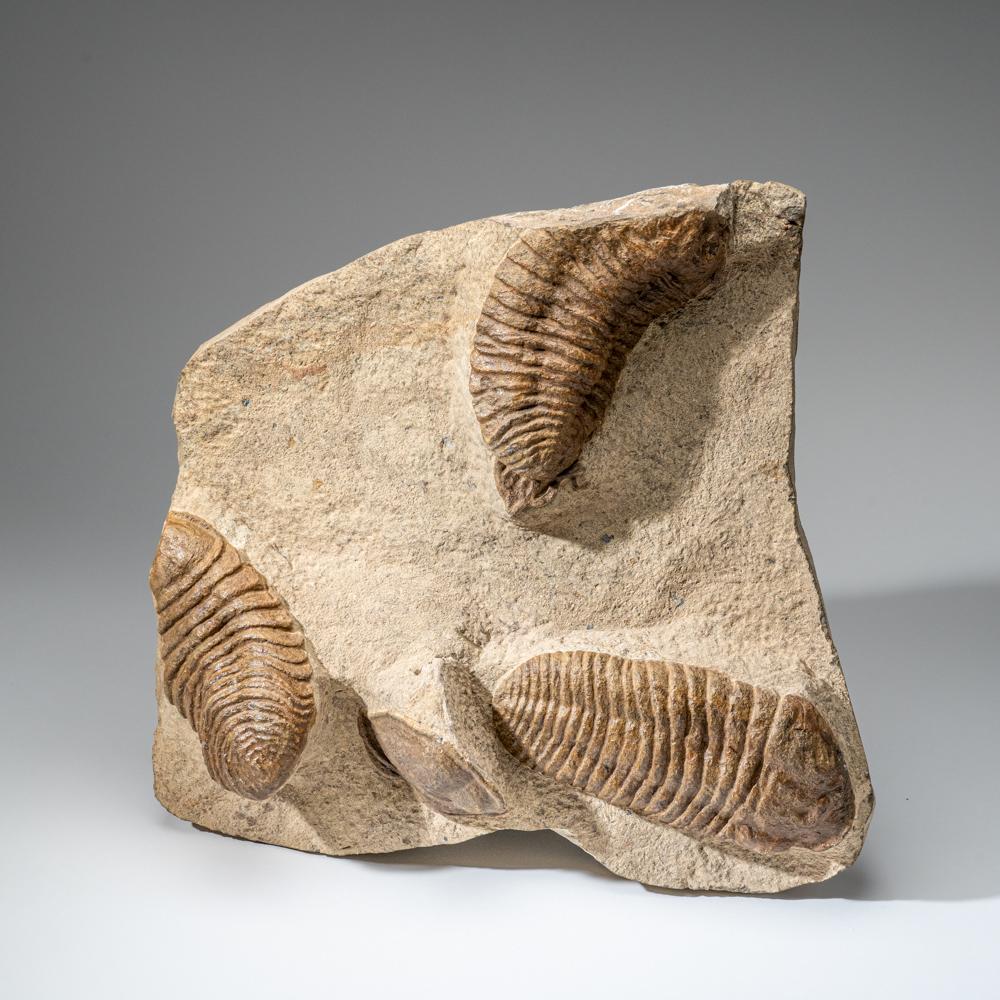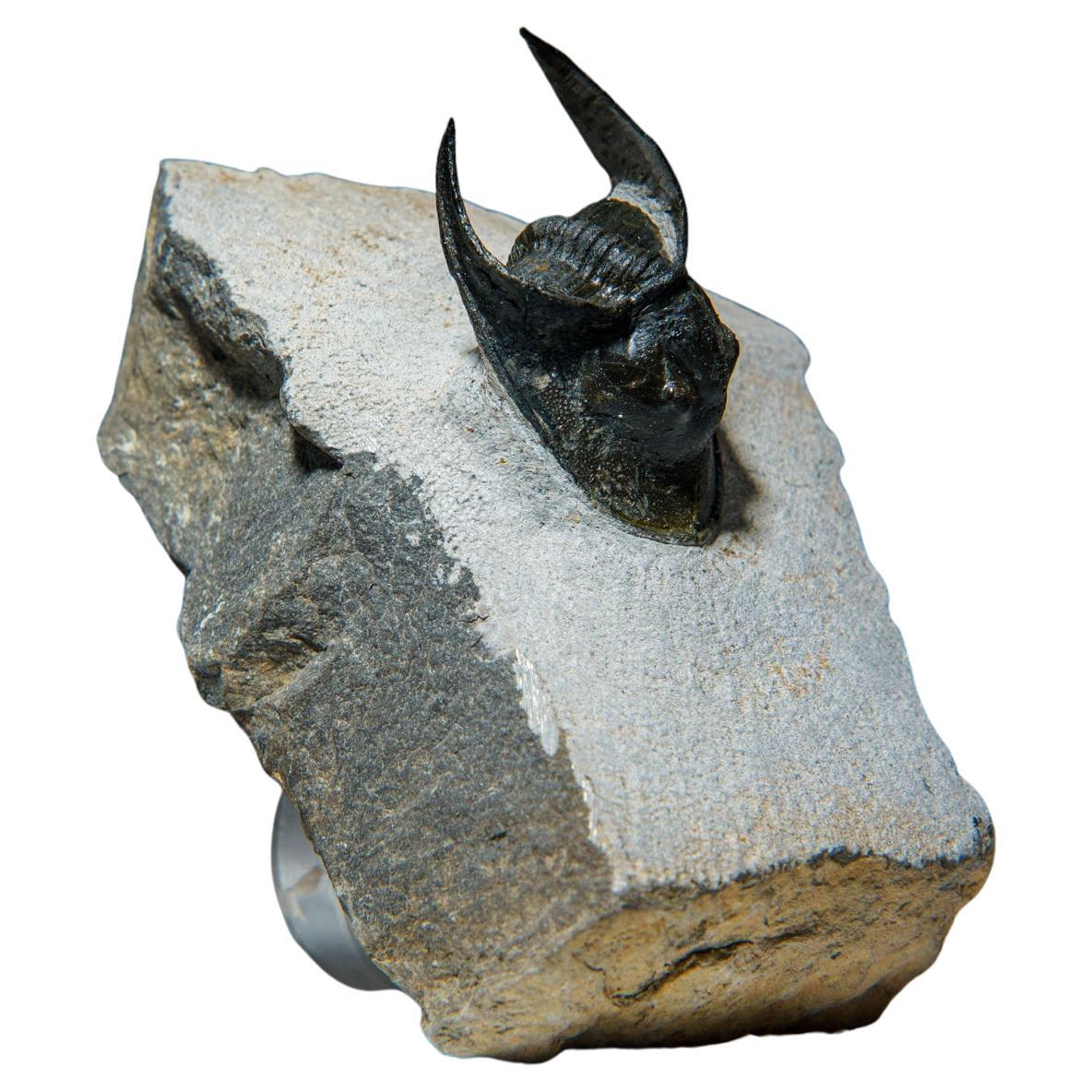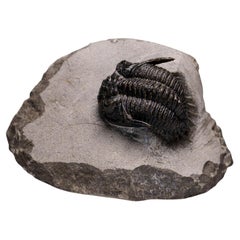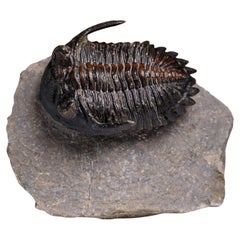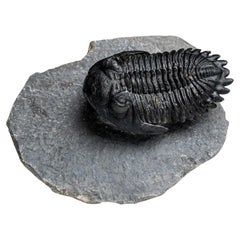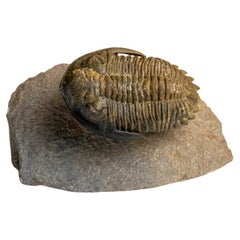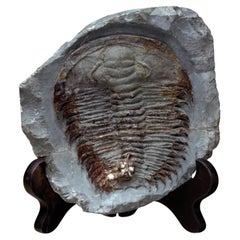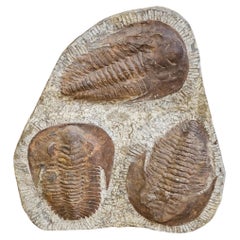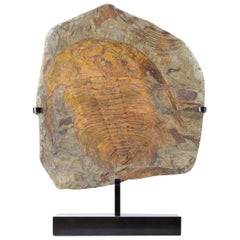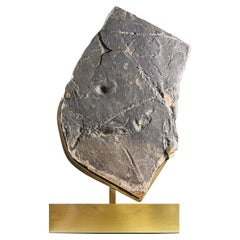Items Similar to Spiny Ceratarges Trilobite Fossil on Matrix from Morocco (299.6 grams)
Want more images or videos?
Request additional images or videos from the seller
1 of 11
Spiny Ceratarges Trilobite Fossil on Matrix from Morocco (299.6 grams)
$2,250
$3,00025% Off
£1,724.91
£2,299.8825% Off
€1,973.78
€2,631.7125% Off
CA$3,179.76
CA$4,239.6825% Off
A$3,456.27
A$4,608.3625% Off
CHF 1,850.20
CHF 2,466.9325% Off
MX$41,778.29
MX$55,704.3925% Off
NOK 23,316.09
NOK 31,088.1225% Off
SEK 21,503.49
SEK 28,671.3225% Off
DKK 14,741
DKK 19,654.6725% Off
About the Item
This alien-looking trilobite, known as Ceratarges ziregensis, has a strikingly otherworldly appearance. It's difficult to believe that this creature once roamed the ancient seas. Found in the Middle Devonian limestone of Morocco, its impressive size and numerous spines may have been used for defense against newly-evolved fish with powerful jaws.
Trilobites, an early arthropod relative of spiders, horseshoe crabs, and scorpions, preserved in this level of detail only occurred as a result of very sudden underwater landslides called turbidite sequences, which ravaged the early earth when the continents were still very much on the move. The contorted body positions of the trilobites demonstrate a final fight against being buried alive.
Species: Ceratarges ziregensis
Location: Zireg, Morocco
Weight: 299.6 grams, Size: 4 x 3 x 4 inches
- Dimensions:Height: 3.75 in (9.53 cm)Width: 2 in (5.08 cm)Depth: 4 in (10.16 cm)
- Materials and Techniques:
- Place of Origin:
- Period:
- Date of Manufacture:21st Century
- Condition:Wear consistent with age and use.
- Seller Location:New York, NY
- Reference Number:Seller: TRI-681stDibs: LU6682244369422
About the Seller
4.0
Vetted Professional Seller
Every seller passes strict standards for authenticity and reliability
Established in 1961
1stDibs seller since 2022
124 sales on 1stDibs
Typical response time: <1 hour
- ShippingRetrieving quote...Shipping from: New York, NY
- Return Policy
More From This Seller
View AllGenuine Ceratarges Spinosus Trilobite on Matrix from Morocco
Located in New York, NY
Trilobites, an early arthropod relative of spiders, horseshoe crabs, and scorpions, preserved in this level of detail only occurred as a result of very sudden underwater landslides c...
Category
Antique 15th Century and Earlier Moroccan Natural Specimens
Materials
Cement, Other
$562 Sale Price
25% Off
Genuine Ceratarges Spinosus Trilobite on Matrix from Morocco
Located in New York, NY
Trilobites, an early arthropod relative of spiders, horseshoe crabs, and scorpions, preserved in this level of detail only occurred as a result of very sudden underwater landslides c...
Category
Antique 15th Century and Earlier Moroccan Natural Specimens
Materials
Cement, Other
$600 Sale Price
25% Off
Genuine Hollardops Trilobite Fossil from Ofaten, Morocco (170.6 grams)
Located in New York, NY
Trilobites, an early arthropod relative of spiders, horseshoe crabs, and scorpions, preserved in this level of detail only occurred as a result of very sudden underwater landslides c...
Category
Antique 15th Century and Earlier Moroccan Natural Specimens
Materials
Cement, Other
$900 Sale Price
25% Off
Genuine Hollardops Trilobite Fossil from Ofaten, Morocco (261.3 grams)
Located in New York, NY
Trilobites, an early arthropod relative of spiders, horseshoe crabs, and scorpions, preserved in this level of detail only occurred as a result of very sudden underwater landslides c...
Category
Antique 15th Century and Earlier Moroccan Natural Specimens
Materials
Cement, Other
$712 Sale Price
25% Off
Genuine Cluster Trilobite (Ptychopariida) Fossil on Matrix
Located in New York, NY
This incredible cluster of trilobites is found in it's original matrix and displays 4 complete or partial fossils throughout. This cluster comes with an acrylic stand so you can prop...
Category
Antique 15th Century and Earlier Moroccan Natural Specimens
Materials
Cement, Other
$4,875 Sale Price
25% Off
Ceratarges Spinosus Trilobite from Morocco, '452.1 Grams'
Located in New York, NY
Trilobites, an early arthropod relative of spiders, horseshoe crabs, and scorpions, preserved in this level of detail only occurred as a result of very sudden underwater landslides c...
Category
Antique 15th Century and Earlier Natural Specimens
Materials
Other
$900 Sale Price
25% Off
You May Also Like
Paradoxides Trilobite Fossil
Located in New York, NY
This Paradoxides trilobite specimen presented as-unearthed in matrix dates back over 499 million years to the Middle Cambrian Epoch. Paradoxides is one of the earliest known genus of...
Category
Antique 15th Century and Earlier Asian Natural Specimens
Materials
Other
$2,800 Sale Price
20% Off
Trilobite Fossil Sculpture
Located in London, GB
Genuine Large Trilobite Plaque
250 million Year Bc
Trilobite Form one of the Earliest Know groups of Arthropods
Origin High Atlas Morroco
Category
Antique 15th Century and Earlier Moroccan Prehistoric Natural Specimens
Materials
Stone
$1,262 Sale Price
50% Off
Fossil Paradoxides Acadoparadoxides Trilobite Surmounted Bronze stand
Located in Scorton, GB
A wonderful example of the Paradoxides acadoparadoxides briareus trilobite measuring 465mm held by the custom bronze mount, our classic range of specimens set into bronze clasps. The...
Category
Antique 15th Century and Earlier North African Prehistoric Natural Speci...
Materials
Limestone, Iron
Rare Fossil Trilobite Tracks Surmounted Etched Brass Stand
Located in Scorton, GB
A rare and fine Devonian Ichnofossil trilobite plate raised on a custom-fitted brass removal mount. The Saharan rock plate has been entirely and attractively weather-worn, with the n...
Category
Antique 15th Century and Earlier North African Prehistoric Natural Speci...
Materials
Limestone, Brass
A Trilobite Fossil
Located in Schellebelle, BE
A Trilobite fossil from Morocco,great patina and shine of the fossilized stone,
Trilobits are extinct marine arthropods,easily recognized by their distinctive
three-lobed, three-seg...
Category
Antique 15th Century and Earlier Moroccan Sculptures and Carvings
Materials
Ironstone
$1,304
8" Neuropteris/Alethopteris Fern Fossil Natural Specimen 300 million years old
Located in Warrenton, OR
8" Neuropteris/Alethopteris Fern Fossil Natural Specimen 300 million years old.
Discovered in PA. Colors occurred naturally over time through fossil mineralization process. The fossi...
Category
Antique 15th Century and Earlier American Prehistoric Natural Specimens
Materials
Organic Material
$212 Sale Price
20% Off
More Ways To Browse
Moroccan Bone
Gypsum Selenite
Large Mushroom Sculpture
Malachite Corn
Marijuana Plants
Marmoratus Shell
Nautilus Mounted
Oriented Meteorite
Painted Ostrich Egg
Petrified Wood Vase
Russian Hardstone
Stand For Coco De Mer
Alabaster Grape Cluster
Butterfly Sculpture In Glass Dome
Crocodile Fossil
Crystal Sphere Stand
Giant Turtle Shell
Green Glass Flower Pot
